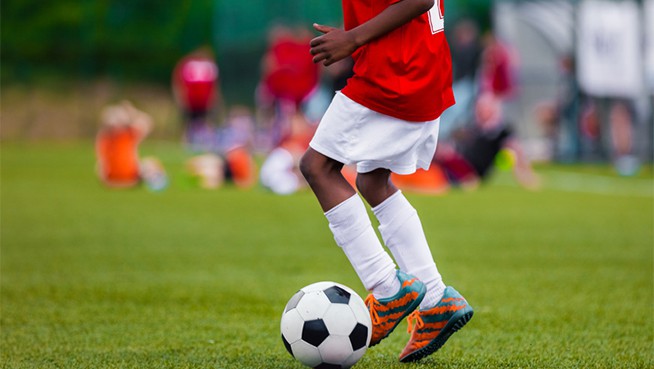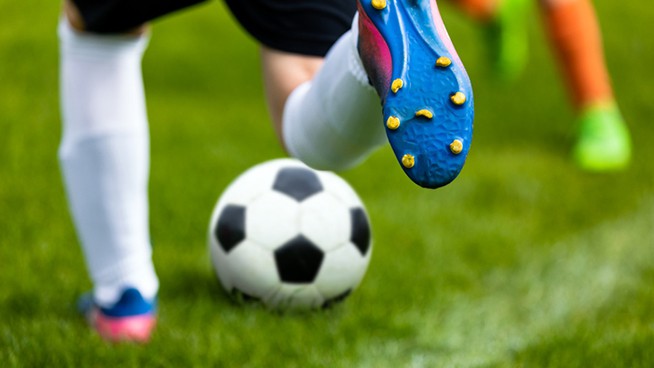5 Tips for Making the Most of Your Swim Training
Swimmers log a lot of time around the black line. Here is how to make the most of your swim training.
As an age grouper, I was doing 10 workouts a week plus a couple of weightlifting sessions while in school. My life felt perpetually water-logged and smelled of chlorine. At the end of the day, as I emptied my bag of soggy towels and a sopping suit, I would write out my workouts in my workout journal.
Though writing out my practices was a good start, simply logging a ton of meters isn’t enough. Your workouts also need to be focused and purposeful, with an eye on progression. This kind of attention to your training results in faster swimming and is much more enjoyable than going to swim practice and just going through the motions.
Here are 5 things you can start doing right away to get more from your swim training:
1. Regularly evaluate your training
When things aren’t going our way, we tend to sag our shoulders and accept that this is the way things are. With some regular evaluation, however, you can more clearly see where things fell off, where things are going well, and what you can do more of. Regularly evaluating your swim training provides critical feedback. Self-evaluation and awareness are essential the more elite you become; tiny differences in technique and effort magnify the more competitive you become.
2. Count the metrics that matter
You know that specific parts of your workout have a disproportionate impact on your overall swimming—things like swimming with proper technique, or the number of race pace meters you perform, or how many underwater fly kicks you do off each wall. A handful of things matter most with your training. Overall volume and attendance aren’t indicative of swimming intensity or focused effort.
Here are a few things you can measure that have high impact:
- Number of meters that you freestyle kick at a specific pace.
- Grade your effort after each practice.
- How many meters you perform at specific intensities/heart rate zones.
3. Set training goals
Every time you walk on deck, you should have a couple of goals in mind for your workout, even if you aren’t the one who designed it. There are things you can control and can decide to work on, regardless of what coach write on the whiteboard.
Here are some of my favorites:
- Do 10 minutes of extra core work after each workout.
- Perform a minimum of 4 underwater fly kicks off every wall for the whole practice.
- Really focus on a high elbow catch while swimming freestyle.
Think of these as your goals, the extras you are going to do to keep yourself engaged in your workouts, but also differentiate yourself from your competition.
4. Ask questions
Going through the motions and swimming through sets are all too common with age group swimmers. This is a communication failure on the coach’s part, yes, but at some point athletes need to take responsibility for their swimming.
Don’t be afraid to ask questions. Ask your coach what you should focus on, or what the overall purpose of the set is. Having purpose is crucial: when we don’t know what the point or purpose of a set is, we don’t know where to direct our energy, or we simply become apathetic about it and sail through the workout without really doing anything.
5. Be willing to fail
Katie Ledecky’s training is legendary, even beyond how fast she goes and how much yardage she logs per session. She goes out of her way to fail. This means choosing a just-out-of-reach stroke rate or interval and “failing” until the moment that she nails it.
The top swimmer on the planet will rinse and repeat this, perpetually cycling up toward becoming a faster and better swimmer. This willingness to fail is harder than it looks and sounds. It’s not just a physical toll, it’s the mental resilience to come back day after day and try and try and try. Each day, show up ready to break barriers, to do something new, and to risk failure. You aren’t going to achieve a best time every day, but if you keep banging away, breakthroughs will happen.
RELATED:
RECOMMENDED FOR YOU
MOST POPULAR
5 Tips for Making the Most of Your Swim Training
Swimmers log a lot of time around the black line. Here is how to make the most of your swim training.
As an age grouper, I was doing 10 workouts a week plus a couple of weightlifting sessions while in school. My life felt perpetually water-logged and smelled of chlorine. At the end of the day, as I emptied my bag of soggy towels and a sopping suit, I would write out my workouts in my workout journal.
Though writing out my practices was a good start, simply logging a ton of meters isn’t enough. Your workouts also need to be focused and purposeful, with an eye on progression. This kind of attention to your training results in faster swimming and is much more enjoyable than going to swim practice and just going through the motions.
Here are 5 things you can start doing right away to get more from your swim training:
1. Regularly evaluate your training
When things aren’t going our way, we tend to sag our shoulders and accept that this is the way things are. With some regular evaluation, however, you can more clearly see where things fell off, where things are going well, and what you can do more of. Regularly evaluating your swim training provides critical feedback. Self-evaluation and awareness are essential the more elite you become; tiny differences in technique and effort magnify the more competitive you become.
2. Count the metrics that matter
You know that specific parts of your workout have a disproportionate impact on your overall swimming—things like swimming with proper technique, or the number of race pace meters you perform, or how many underwater fly kicks you do off each wall. A handful of things matter most with your training. Overall volume and attendance aren’t indicative of swimming intensity or focused effort.
Here are a few things you can measure that have high impact:
- Number of meters that you freestyle kick at a specific pace.
- Grade your effort after each practice.
- How many meters you perform at specific intensities/heart rate zones.
3. Set training goals
Every time you walk on deck, you should have a couple of goals in mind for your workout, even if you aren’t the one who designed it. There are things you can control and can decide to work on, regardless of what coach write on the whiteboard.
Here are some of my favorites:
- Do 10 minutes of extra core work after each workout.
- Perform a minimum of 4 underwater fly kicks off every wall for the whole practice.
- Really focus on a high elbow catch while swimming freestyle.
Think of these as your goals, the extras you are going to do to keep yourself engaged in your workouts, but also differentiate yourself from your competition.
4. Ask questions
Going through the motions and swimming through sets are all too common with age group swimmers. This is a communication failure on the coach’s part, yes, but at some point athletes need to take responsibility for their swimming.
Don’t be afraid to ask questions. Ask your coach what you should focus on, or what the overall purpose of the set is. Having purpose is crucial: when we don’t know what the point or purpose of a set is, we don’t know where to direct our energy, or we simply become apathetic about it and sail through the workout without really doing anything.
5. Be willing to fail
Katie Ledecky’s training is legendary, even beyond how fast she goes and how much yardage she logs per session. She goes out of her way to fail. This means choosing a just-out-of-reach stroke rate or interval and “failing” until the moment that she nails it.
The top swimmer on the planet will rinse and repeat this, perpetually cycling up toward becoming a faster and better swimmer. This willingness to fail is harder than it looks and sounds. It’s not just a physical toll, it’s the mental resilience to come back day after day and try and try and try. Each day, show up ready to break barriers, to do something new, and to risk failure. You aren’t going to achieve a best time every day, but if you keep banging away, breakthroughs will happen.
RELATED:











